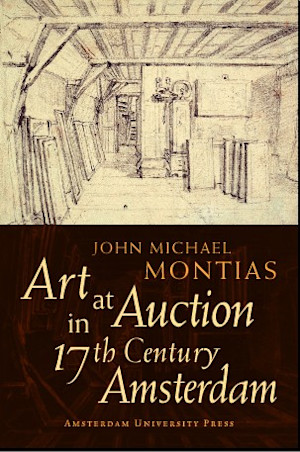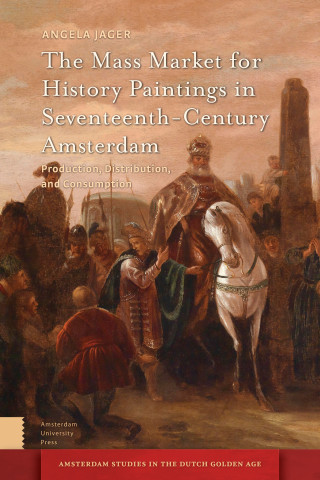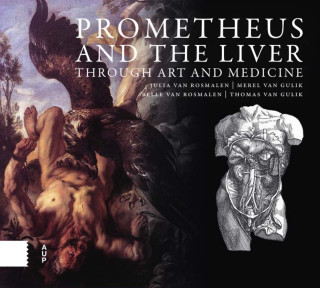
From 1st October, English-language AUP books will be published by Taylor & Francis. More details: AUP and Taylor & Francis Partner on English-Language Book Programme
J. Montias
Art at Auction in 17th Century Amsterdam
This book exploits a trove of original documents that have survived on the auctions organized by the Orphan Chamber of Amsterdam in the first half of the 17th century. For the first time, the names of some 2000 buyers of works of art at auction in the 29 extant notebooks of the Chamber have been systematically analyzed. On the basis of archival research, data have been assembled on the occupation of these buyers (most of whom were merchants), their origin (Southern Netherlands, Holland, and other), their religion, their year of birth, their date of marriage, the taxes they paid and other indicators of their wealth. Buyers were found to cluster in groups, not only by extended family but by occupation, religion (Remonstrants, Counter-Remonstrants) and avocation (amateurs of tulips and of porcelain, members of Chambers of Rhetoricians, and so forth). The subjects of the works of art they bought and the artists to which they were attributed (only the most important were attributed) are also analyzed. In the second part of the book on “Selected Buyers”, three chapters are devoted to art dealers who bought at auction and four to buyers who had special connections with artists, including principally Rembrandt. To forge a link between the cultural milieu of Amsterdam in this period and the buying public, two chapters are given over to buyers who were either poets themselves or were connected with contemporary poets. As a whole, the book offers a penetrating insight into the culture of the Amsterdam elite in the 17th century.
Author
- Title
- Art at Auction in 17th Century Amsterdam
- Author
- J. Montias
- ISBN
- 9789048505166
- Format
- eBook PDF
- Number of pages
- 336
- Language
- English
- Publication date
- 07 - 11 - 2002
- Dimensions
- 16 x 24 cm
- Open Access
- Download on Open Access Platform
- Discipline
- History, Art History, and Archaeology
Table of Contents - 6
Acknowledgements - 8
Part I - The Auctions - 10
Introduction - 12
1 Orphan Chamber Auctions in Amsterdam - 16
2 How Auction Sales of the Orphan Chamber Were Conducted - 21
3 Extant Records of Auction Sales in Chronological Perspective - 28
4 Aggregate Statistics of Sales and the Owners of Goods Sold - 34
5 The Buyers at Auction Sales - 42
6 The Wealth of Buyers - 53
7 Clusters of Private Buyers - 58
8 Remonstrants and Counter-Remonstrants - 78
9 What Did They Buy and at What Prices? - 88
10 Attributions - 94
11 Echoes - 101
12 Concluding Words on Auctions - 109
Part II - Profiles of Selected Buyers - 112
Introduction - 114
13 Art Dealers I: Artists and Merchants in the Trade - 115
14 Art Dealers II: Johannes de Renialme - 115
15 Art Dealers III: The Story of a Merchant Who Thought He Could Sell Paintings to a King - 145
16 Art Collectors and Painters I: Rubens’s Promise to Hans Thijsz. - 154
17 Art Collectors and Painters II: Jacob Swalmius and Rembrandt - 165
18 Art Collectors and Painters III: Marten van den Broeck and Rembrandt's Losses at Sea - 181
19 Art Collectors and Painters IV: Jan van Maerlen and His Extended Family - 189
20 Art Collectors and Painters V: Jean le Bleu, François Venant and Rembrandt's "Feast of Belshazzar" - 205
21 A Collector with Connections to Major Cultural Figures: Robbert van der Hoeve and the "Muiden Circle" - 210
22 What Santa Claus Brought to the Youth of Amsterdam - 221
23 When Sellers and Buyers Were Related: Elbert and Cornelis Symonsz. Pool, Jeltge Claes, and Pieter Claesz. Codde - 227
24 A Collector Who Held On to His Purchase for Over Fifty Years - 235
25 An Afterword on Mentalités - 244
Bibliography - 248
Published Sources - 250
Notes - 258
Related titles

The Mass Market for History Paintings in Seventeenth-Century Amsterdam
Angela Jager

Constrained Expertise in India and China
Manjari Mahajan, Mark Frazier (eds)

Art and Allegiance in the Dutch Golden Age
Margriet van Eikema Hommes

Prometheus and the Liver through Art and Medicine
Julia van Rosmalen, Merel van Gulik, Belle van Rosmalen, Thomas van Gulik
